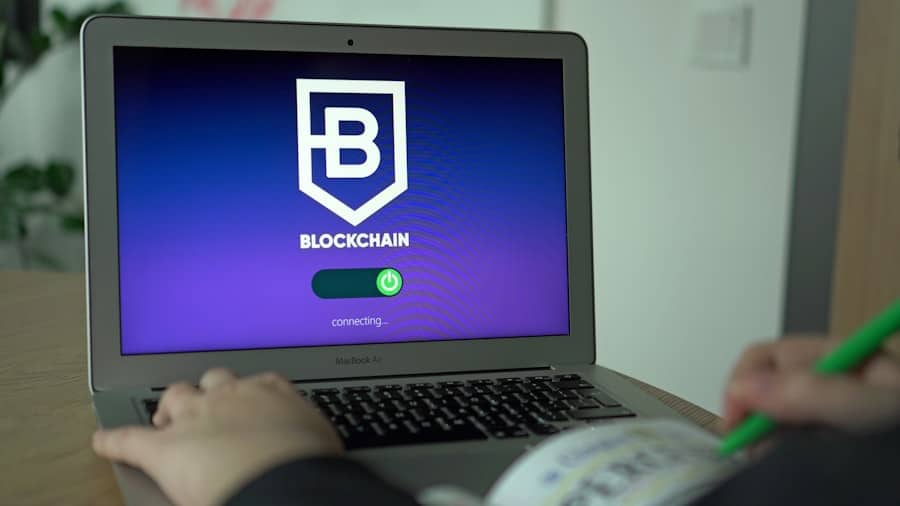Micropayments refer to financial transactions that involve very small amounts of money, typically ranging from a fraction of a cent to a few dollars. These transactions have gained traction in various sectors, particularly in digital content, gaming, and online services, where traditional payment methods often prove inefficient or cost-prohibitive. The rise of the internet and digital commerce has created a demand for more flexible payment solutions that can accommodate low-value transactions without incurring excessive fees.
However, conventional payment systems, such as credit cards and bank transfers, often impose minimum transaction limits and high processing fees, making micropayments economically unfeasible. Blockchain technology has emerged as a transformative solution for micropayments, offering a decentralized and secure framework that can facilitate these small transactions efficiently. By leveraging the unique properties of blockchain—such as transparency, immutability, and reduced transaction costs—businesses and consumers can engage in micropayments with greater ease and confidence.
This technology not only addresses the limitations of traditional payment systems but also opens up new avenues for monetization in the digital economy, allowing creators and service providers to receive compensation for their work in a more granular manner.
Key Takeaways
- Micropayments are small financial transactions typically involving very low amounts of money, often in the range of a fraction of a cent to a few dollars.
- Blockchain technology offers benefits for micropayments including low transaction fees, fast processing times, and enhanced security and transparency.
- Blockchain solves challenges of micropayments such as high transaction fees, slow processing times, and security concerns by providing a decentralized and immutable ledger.
- Real-world applications of blockchain for micropayments include content monetization, in-game purchases, and IoT (Internet of Things) transactions.
- The future of micropayments with blockchain technology looks promising, with potential for widespread adoption and innovation in various industries.
The Benefits of Using Blockchain for Micropayments
One of the most significant advantages of utilizing blockchain for micropayments is the reduction in transaction costs. Traditional payment processors often charge a flat fee or a percentage of the transaction amount, which can be prohibitive for low-value transactions. In contrast, blockchain networks can facilitate peer-to-peer transactions with minimal fees, often just a fraction of a cent.
This cost efficiency enables businesses to implement micropayment models that were previously unviable, such as pay-per-article news services or micro-subscriptions for digital content. Additionally, blockchain technology enhances the speed and efficiency of micropayments. Transactions on a blockchain can be processed in real-time or near real-time, eliminating the delays associated with traditional banking systems.
This immediacy is particularly beneficial for industries like gaming or online content distribution, where users expect instant access to services or products upon payment. Furthermore, the decentralized nature of blockchain reduces reliance on intermediaries, streamlining the payment process and minimizing potential points of failure.
How Blockchain Solves the Challenges of Micropayments

The challenges associated with micropayments are multifaceted, encompassing issues such as high transaction fees, slow processing times, and security concerns. Blockchain technology addresses these challenges through its inherent design. For instance, by utilizing smart contracts—self-executing contracts with the terms of the agreement directly written into code—blockchain can automate micropayment transactions.
This automation not only reduces the need for intermediaries but also ensures that payments are executed only when predefined conditions are met, enhancing trust between parties. Moreover, blockchain’s transparency and immutability contribute to enhanced security in micropayment transactions. Each transaction is recorded on a public ledger that is accessible to all participants in the network, making it nearly impossible to alter or manipulate transaction data without consensus from the network.
This level of security is particularly crucial in an era where digital fraud and cyberattacks are prevalent. By providing a secure environment for micropayments, blockchain fosters greater confidence among users and encourages broader adoption of micropayment models.
Real-world Applications of Blockchain for Micropayments
Several real-world applications illustrate the potential of blockchain technology in facilitating micropayments across various industries. One notable example is the media sector, where platforms like Brave Browser utilize blockchain to enable users to make micropayments to content creators through its Basic Attention Token (BAT). Users can choose to view advertisements in exchange for BAT tokens, which they can then distribute to their favorite content creators as a form of support.
This model not only empowers users to control their online experience but also provides a sustainable revenue stream for creators who might otherwise struggle to monetize their work. In the gaming industry, blockchain-based platforms such as Enjin and Immutable X are revolutionizing how players engage with in-game assets. These platforms allow players to buy, sell, and trade virtual items using cryptocurrencies in a secure environment.
The ability to conduct micropayments for in-game purchases—such as skins or upgrades—without incurring hefty fees has transformed the gaming landscape, enabling developers to create more engaging experiences while providing players with true ownership of their digital assets.
The Future of Micropayments with Blockchain Technology
As blockchain technology continues to evolve, its potential to reshape the landscape of micropayments is becoming increasingly apparent. The integration of layer-two solutions—such as the Lightning Network for Bitcoin or Ethereum’s rollups—promises to further enhance transaction speeds and reduce costs associated with micropayments. These solutions enable off-chain transactions that can be settled on-chain later, allowing for rapid and cost-effective microtransactions that could unlock new business models across various sectors.
Moreover, advancements in interoperability between different blockchain networks could facilitate seamless micropayment transactions across platforms. As more businesses adopt blockchain technology, the ability to transact across multiple chains without friction will become essential. This interoperability could lead to the emergence of new marketplaces where users can engage in micropayments across diverse ecosystems, further driving innovation and economic activity.
The Role of Cryptocurrencies in Facilitating Micropayments

Cryptocurrencies play a pivotal role in enabling micropayments on blockchain networks. Unlike traditional fiat currencies, cryptocurrencies are designed for digital transactions and can be easily divided into smaller units without losing value. For instance, Bitcoin can be subdivided into satoshis (one hundred millionth of a Bitcoin), allowing users to conduct transactions worth mere cents or even fractions of a cent.
Additionally, many cryptocurrencies are built with low transaction fees in mind, making them ideal candidates for micropayment applications. For example, cryptocurrencies like Nano and Stellar have been specifically designed to facilitate fast and fee-less transactions, making them suitable for everyday micropayment scenarios such as tipping content creators or purchasing digital goods. As more merchants begin to accept cryptocurrencies as payment options, the viability of micropayment models will continue to expand.
The Impact of Blockchain on Financial Inclusion and Economic Empowerment
The advent of blockchain technology has significant implications for financial inclusion and economic empowerment, particularly in underserved regions where access to traditional banking services is limited. By enabling low-cost micropayments through decentralized networks, blockchain can provide individuals with access to financial services that were previously out of reach. For instance, people in developing countries can use mobile wallets powered by blockchain to send and receive small amounts of money without needing a bank account.
Small-scale entrepreneurs can leverage blockchain-based micropayment systems to sell their products or services online without incurring prohibitive fees associated with traditional payment processors. Furthermore, by facilitating direct transactions between consumers and producers, blockchain can help eliminate intermediaries who often take a significant cut of profits, thereby enabling more equitable economic opportunities.
Regulatory and Security Considerations for Blockchain-based Micropayments
While the potential benefits of blockchain-based micropayments are substantial, there are also regulatory and security considerations that must be addressed. Governments around the world are grappling with how to regulate cryptocurrencies and blockchain technologies effectively while fostering innovation. Regulatory frameworks need to strike a balance between protecting consumers from fraud and ensuring that businesses can operate without excessive burdens.
Security is another critical concern in the realm of blockchain micropayments. Although blockchain technology is inherently secure due to its decentralized nature, vulnerabilities still exist—particularly at the user level. Phishing attacks targeting cryptocurrency wallets or exchanges can lead to significant losses for individuals engaging in micropayments.
Therefore, educating users about best practices for securing their digital assets is essential for fostering trust in blockchain-based payment systems. In conclusion, while challenges remain regarding regulation and security, the integration of blockchain technology into micropayment systems holds immense promise for transforming how we conduct low-value transactions across various sectors. As this technology continues to mature and gain acceptance, it has the potential to create new economic opportunities and enhance financial inclusion on a global scale.
In the rapidly evolving world of digital finance, blockchain technology is playing a pivotal role in transforming how micropayments are processed globally. This innovation is not only enhancing transaction speed and reducing costs but also paving the way for new business models and opportunities. For those interested in exploring other technological advancements, you might find the article on

